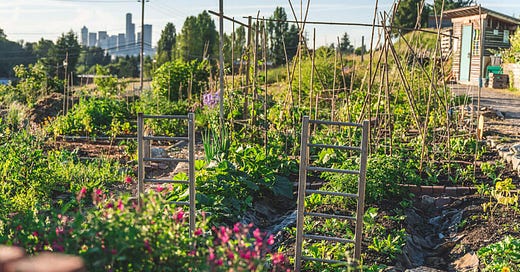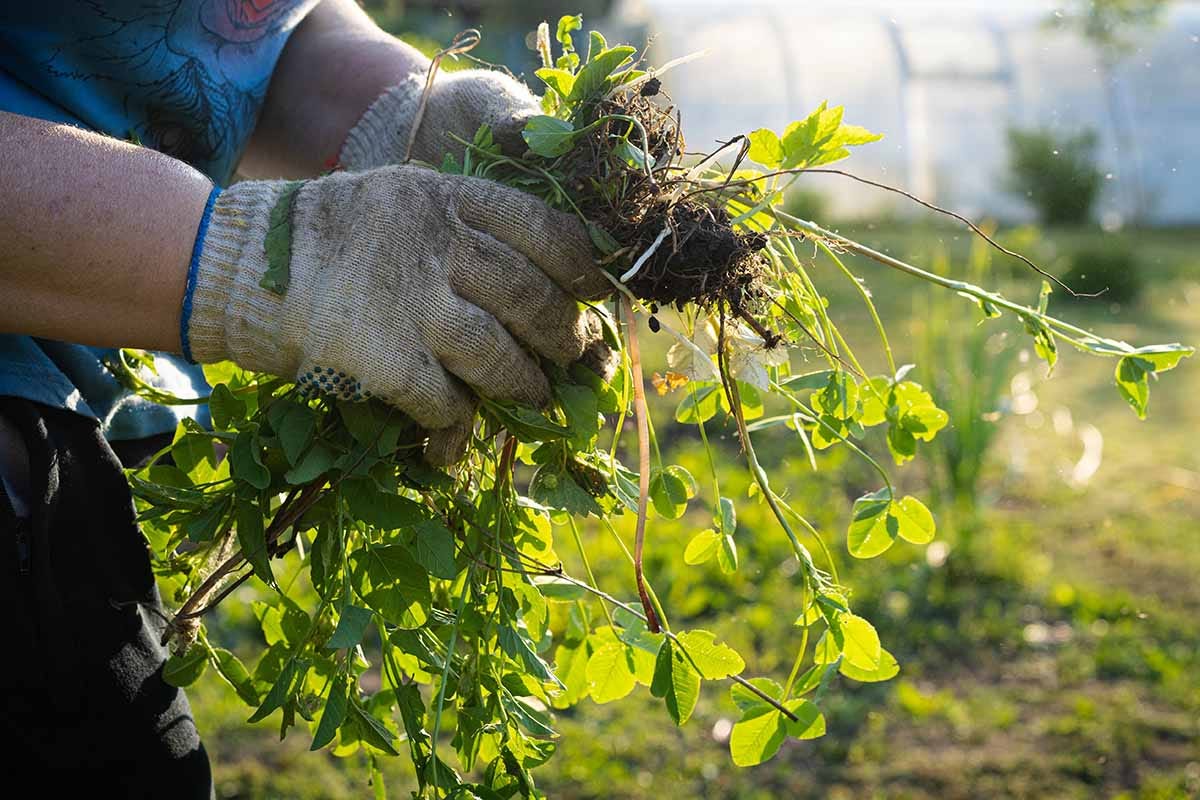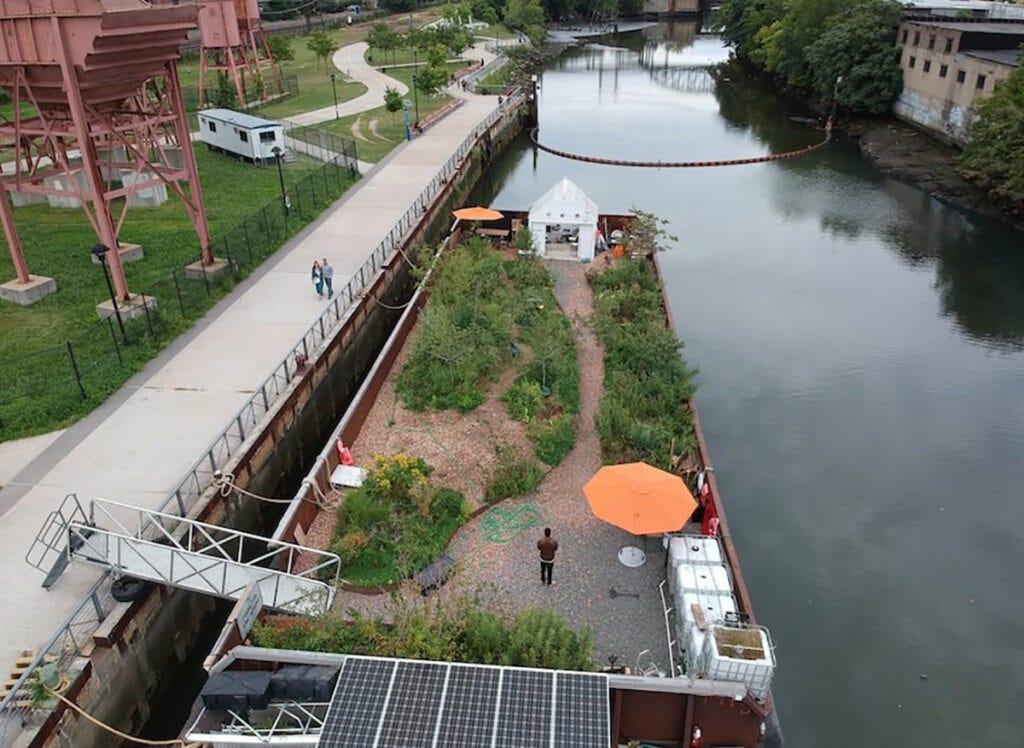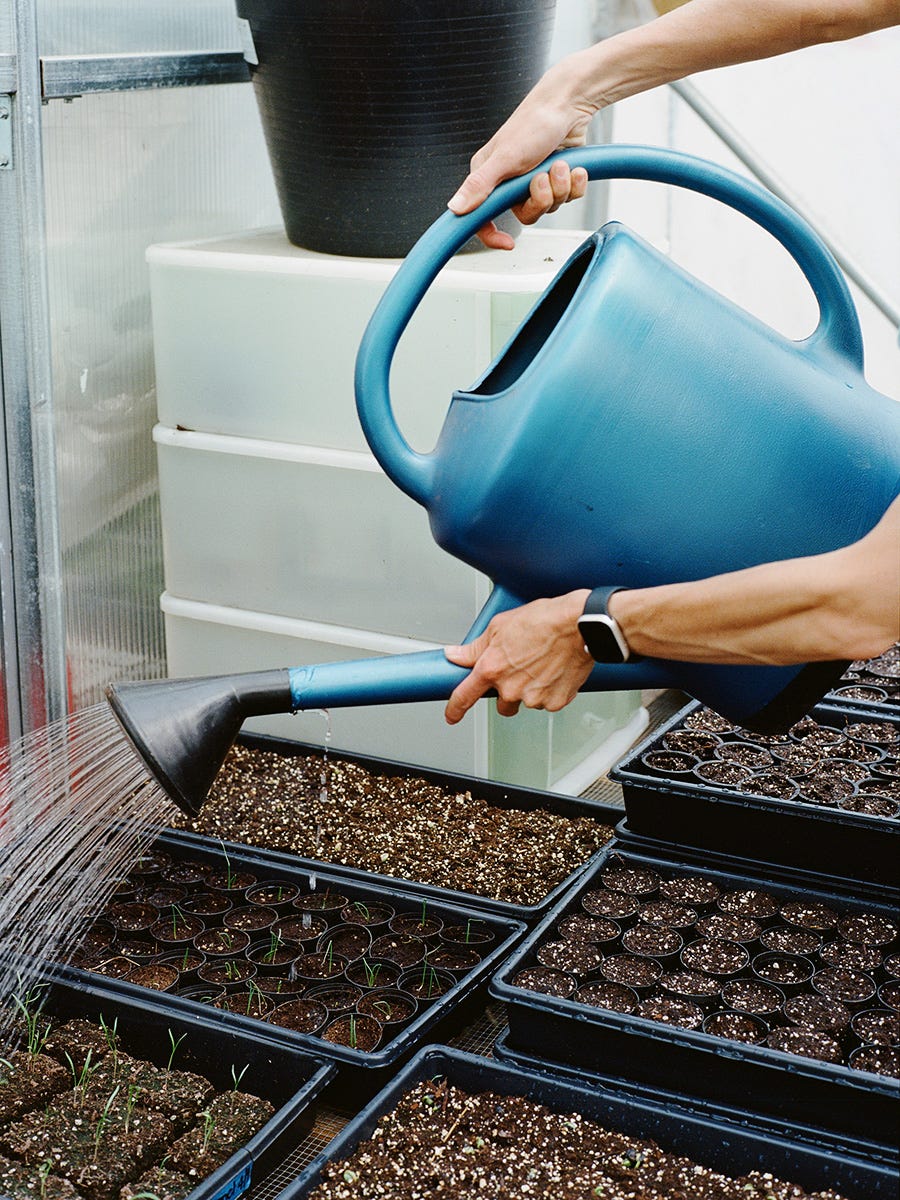An Edible Future
Designing edible cities, Edible mushrooms and weeds, Ozempic killing the joy of eating, Scrounging for food and late night delights, Eating muffins, and more!
Hello readers,
This newsletter we will be talking about urban agriculture, foraging, edible weeds, appetites and scrounging. I love that food writing can be so expansive. Last week we spoke about AI and robots and this week it’s back to the literal roots, soil and gardens. All very real realities and contradictions that make up our complex modern lives.
Recently I’ve been in Aspen doing some private chef work! It’s been the biggest honor to step back into the kitchen and I have found so much joy in feeding people again. Kate and I have purchased a condo in Denver to have a little home base, and in our typical fashion, it needs a full renovation. As this newsletter’s primary focus is the intersection of food/beverage and culture, I would hesitate to disrupt the flow with renovation updates, however, I aim to delight my readers in any fashion, so if it’s something you would like to see, please let me know via email, comments, or your prefered contact method!
Before we officially get started, Will Cooper shared this quote from Charles Maurice de Talleyrand (1754-1838) in his newsletter A Private Chef that joins on from our discussion last newsletter about small pleasures.
“Show me another pleasure like dinner which comes every day and lasts an hour.”
Really quite wonderful when you think about it.
In this week’s newsletter:
Mushroom color atlas
Weeds Are Everywhere. Why Aren’t We Eating Them More?
An Edible City
Wood Sorrel Lemonade
Caught in the act
On eating muffins in times like these
Mushroom Color Atlas:
I love fungi and am mesmerized every time I see new photos and time lapses of them. Bjork (yes that Bjork) narrated this fascinating documentary about the life and possibilities of fungi. Currently, we’ve only described about approximately 5% of the world’s fungi. I would watch this film for the visuals alone. Fungi-forward thinking is growing in prevalence across many disciplines, most notably food and health industries.
A fun interactive and creative presentation of the diversity of mushrooms is the Mushroom Color Atlas. The site features 825 colors that are associated with different types of mushrooms. You can then click on the mushroom that is represented by each color and learn about it. It shows the different ‘batches’ and preparations made to create the colors. The resource has now been turned into a reference book for identifying different mushrooms, equal parts art book, field guide, and color distillation workshop, the book is beautifully illustrated with watercolor drawings.
Artist, mycophile, and educator Julie Beeler covers the entire process, from foraging and species identification, to preparing the fungi and fiber, to producing lustrous dyes, paints, and pigments from them. The color range is beautiful, I’ll consider referencing it the next time we’re painting…
“In an era when we are increasingly reliant on technology and corporate consumer goods, creating colorants from mushrooms feels like a radical act. Learning to extract these rich colors—which requires making countless decisions with our eyes, hands, and esthetic intuitions—gives us an intimate connection to each hue and its mushroom source.”
Last year I wrote about the new cocktail frontier of mushrooms in cocktails and beer and some tips for concocting your own mushroom drinks.
Weeds Are Everywhere. Why Aren’t We Eating Them More?
On a similar foraging note, Florence Williams wrote a piece for T Magazine about the next frontier in foraging for some chefs, weeds. We are entering a new age of food instability and insecurity, it’s in our best interests to get creative and expand our minds and palates.
According to the regenerative land steward and chef Katrina Blair, “Weeds offer a path to sustain us through uncertain times,” she says. Historical examples abound: The foliage of charlock, a yellow-flowered weed, became a food source for some in Ireland during the 18th- and 19th-century famines there. In Scotland, the seeds of the same kind of plant were used to make bread during times of scarcity.”
New Jersey-based forager Tama Matsuoka Wong, supplies some of New York City’s top restaurants with weeds and explains they are becoming both a novelty for certain chefs and a necessity for people trying to eat more environmentally consciously.
Here’s a list of 20 edible weeds you might find in your garden otherwise James A. Duke’s Handbook of Edible Weeds is a good place to start. Better still, find a local zine or guide specific to your zip code or state.
An Edible City:
Talking of edible gardens and foraging, MOLD magazine’s forthcoming print issue ‘Design for a New Earth’ tackles the grounds for transformation and edible cities.
“Urban agriculture will never be able to feed the cities of the future. At least not completely. This fact has been proven time and again by researchers and scientists, who point to spatial limitations and nutrient-poor soil as barriers to the self-sufficient city.”
However, there are still a plethora of benefits of growing food in cities on individual scales and broader community ones. Initiatives for introducing ‘edible gardens’ into cities have always existed.
“In 2005, the architect-turned-artist Fritz Haeg broke ground on the first lawn in his Edible Estates series. The initiative reimagined the typically sterile, manicured lawn as a site for dynamic interactions between humans and their environment. Over the next seven years, Haeg would transform lawns from Kansas to Aarhus into biologically diverse ecosystems, trading sod for intricate networks of native and edible plants.”

“The dream for the edible city may be more ubiquitous than we think. While current urban food production initiatives are often mired by the pressures of real estate and bureaucratic red tape, one does not have to look too far back to find precedence for urban food initiatives and infrastructures within our very own neighborhoods.
For example, visitors to New York City parks such as Fort Greene and McCarren Park might be surprised to find that these green spaces were once designed to house flourishing urban educational farms. In 1902, Francis Griscom Parsons, a Brooklyn-based mother to seven, founded an experimental children’s farm on a public lot in what was then colloquially referred to as Hell’s Kitchen. The success of the farm sparked the school garden movement in New York City, which advocated for the belief that access to open space, the right to play, and the skills to grow one’s own food were inextricable from one’s humanity and thus necessary to ensure that children grew up to be good citizens.”
The EU is really championing urban agriculture initiatives with their Edible Cities project. Similar projects persist all over the country today, in New York City there are 100 acres of community gardens.
“In 2017, the Bronx River Foodway opened in Concrete Plant Park, where the food forest had previously docked, becoming the first foraging park in New York City. Elsewhere in the city, other initiatives such as Project EATS and Oko Farms have found ways to carve out space for food production to provide not only fresh food but also education around food systems to their local communities.”
In the coming years, we will have to really confront our relationship with food production and our consumption. There is still a huge lack of investment and preparation for our future when it comes to urban agriculture programs.
“By dislodging food from the capitalist agricultural systems that normally dictate its consumption, the drive for the edible city brings us eye-to-eye with the very stem, bush, or tree we rely on for sustenance.”
Wood Sorrel Lemonade:
Inspired by foraging, here is a little recipe for wood sorrel lemonade from a little edible weeds zine. Super simple and one everyone can enjoy.
Has Ozempic killed the joy of food?
Throughout history, decadent eating has long been a symbol of wealth, nowadays, in Western society thinness and ‘wellness’ ar more likely to signal that. But what is this doing to our joy of eating?
“Calorie counting and diets are nothing new. But the fixation with monitoring our glucose levels and other indicators while still at the table is. As wine and spirit sales in the US slump (by 8 percent and 3.9 per cent respectively, according to industry figures) in line with a global decline, it’s hard not to conclude that health is trumping hedonism.”
”Off-lable weight-loss drugs such as Ozempic have been a breakthrough because they eliminate the need to cut back or compensate by mimicking the gut hormone (GLP-1) and making people feel full faster.”
“These drugs are believed to have contributed to the first decrease in US obesity rates in more than a decade.”
The Financial Times published a piece by Ajesh Patalay examining the less talked about effects of Ozempic killing the joys of eating along with appetites.
“The type of food GLP-1 users want changes; their tastebuds change,” says New York-based physician Dr Alexandra Sowa, author of The Ozempic Revolution… “People crave fewer sweet, salty, hyper-palatable junk foods and more unprocessed whole foods: vegetables, meat, eggs, dairy. When many of my patients dine out, they order the plain protein and vegetables, not because they’re on a diet but because that’s actually what they want.”
Some fine dining restaurants are even rethinking their food portions to meet customer demands. Of course, eating healthier is a good thing and the obesity crisis is very real. Further, ozempic is a life changing drug for those who need it. I am speaking about a particular group in society using the drug for aesthetic purposes, consequently raising costs and creating scarcity, making it harder for people who really need to access it.
Is the only way to moderate our consumption to kill all desire and appetite? What does this look like for the future of dining?
Caught in the act:
Scrounging: an alternative type of ‘foraging’, the type that occurs in the back of your fridge late at night or the day before you really have to go to the supermarket.
Scrounging for leftovers, midnight snacks, guilty pleasures, ‘forbidden’ combinations, and lazy dinners which would be ambitious to even call ‘meals’, are all part of The Joy of Cooking (although maybe not quite what Irma S. Rombauer had in mind when she wrote one of the United States' most-published cookbooks, of that title).
This week I was reminded of A24’s Scrounging: A Cookbook. “A collection of late-night, last-ditch recipes and ingenious back-of-the-pantry meals straight from movies.” I was a big fan of their 2021 horror-film-inspired cookbook Horror Caviar.
The very idea opposes the suppression of desire Ozempic champions.
The recipes are from 54 films “including The Breakfast Club's Pixy Stix sandwich, The Apartment's tennis racket spaghetti, The Martian's baked potato with Vicodin, Home Alone's 12-scoop ice cream sundae, Kramer vs. Kramer's divorced dad french toast, and many more.”
“The food scenes that people talk about are really grandiose or super sexy or over-the-top: the food in Marie Antoinette or the prawns in I Am Love. But we’re looking for the disgusting sandwich that someone makes because they have five minutes to send their kids to school and also have amnesia and have been abducted by Kurt Russell.”
I wrote about MK Fischer’s concept of ‘Secret Foods’ around this time last year and their important distinction from ‘guilty pleasures’. So perhaps there is something about February and the gloss of the new year wearing off that brings me back to the scrounging roots of student life...
On eating muffins in times like these:
Finally, because it’s not a sobremesa newsletter if the state of the world isn’t acknowledged and some attempt for respite or amusement is made. Nic Miller quoted this from Oscar Wilde’s The Importance of Being Earnest in his newsletter Tales from Topographic Kitchens which made me chuckle.
“How you can sit there, calmly eating muffins when we are in this horrible trouble, I can’t make out. You seem to me to be perfectly heartless."
"Well, I can’t eat muffins in an agitated manner. The butter would probably get on my cuffs. One should always eat muffins quite calmly. It is the only way to eat them."
"I say it’s perfectly heartless your eating muffins at all, under the circumstances.”
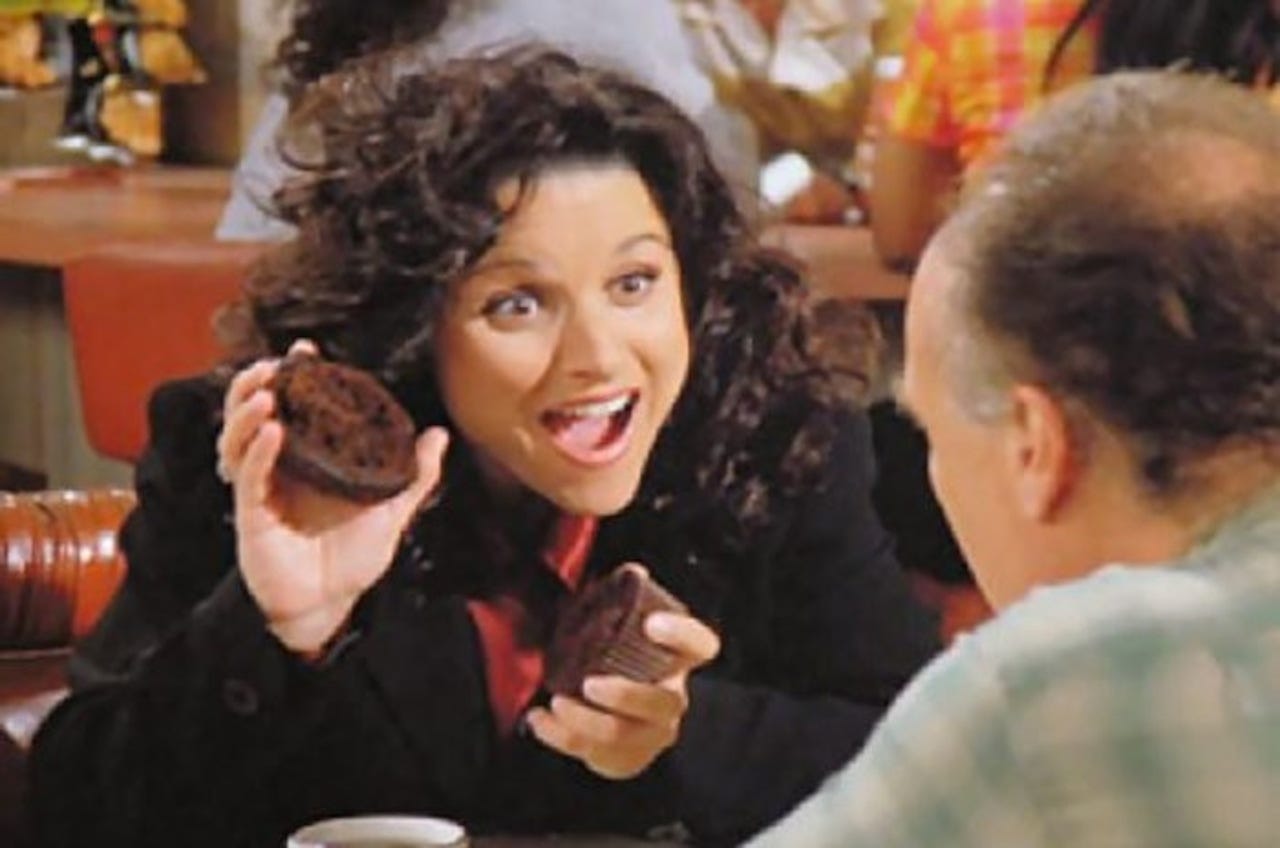
Whatever is going on, remember to calmly enjoy your muffins.
That’s all for this week folks!
If you haven’t subscribed yet, please do - it’s free! It means more to me than you would know. Sobremesa is a reader-supported publication. It really does keep the motivation high to keep researching and keep writing.
Carlie xx


